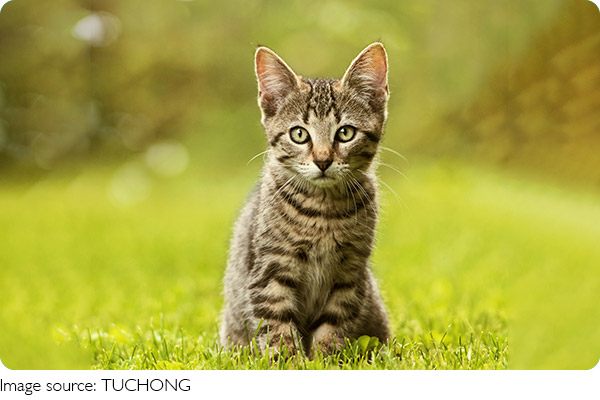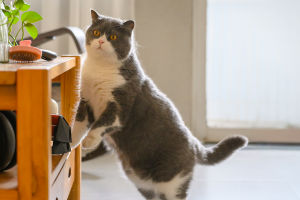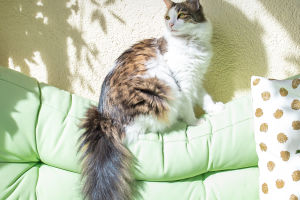Cat Coldness: A Myth?

Cats have long been labeled as aloof, independent, and emotionally distant—especially when compared to their canine counterparts.
But ask any dedicated cat parent, and they'll tell you a different story: one full of head bumps, slow blinks, and quiet companionship. So, is the stereotype of the "cold" cat true, or are we simply failing to read their social cues?
Let's decode the silent language of cats and see what's really going on beneath that mysterious stare.
1. The Science Behind Feline Behavior
Cats are not pack animals. Their evolutionary roots as solitary hunters mean that they don't rely on group structures or overt social behaviors like dogs do. But solitary doesn't mean antisocial. According to a 2019 study published in Animal Cognition, domestic cats are capable of forming secure bonds with humans—much like infants with caregivers.
In fact, about 65% of cats in the study were classified as securely attached.
So why the cool exterior? Cats express affection in quieter, less obvious ways. If you're waiting for tail-wagging or face-licking, you'll likely miss the subtle signals of trust they're already giving you.
2. 5 Cat Behaviors That Actually Mean "I Like You"
If you think your cat is ignoring you, take a closer look. Many "cold" behaviors are actually signs of deep affection:
1. Slow blinking: When your cat looks at you and slowly closes and opens its eyes, it's not bored—it's saying "I trust you." Try returning the gesture next time.
2. Head bunting: That gentle bump from their forehead? It's a scent-marking gesture cats use only with those they feel safe around.
3. Following you around: If your cat shadows you from room to room, even if it's not seeking pets, it's their version of companionship.
4. Belly exposure: A cat that shows you its belly isn't always asking for a rub (in fact, many hate it!)—it's saying "I feel safe around you."
5. Grooming you or sitting near you: Licking your hand or curling up on your laptop might be annoying, but it's also a clear message: "You're part of my circle."
3. Misreading the Signals
It's not uncommon for cat owners to mistake neutrality for rejection. For example, a cat may sit in the same room as you but not interact directly. Many people interpret that as distance or disinterest. In reality, that's a huge compliment in the cat world.
Unlike dogs, who crave constant validation, cats are more subtle. Their idea of "quality time" might be simply existing beside you in silence. If your cat is often near but not on you, they're saying: "I'm here, and I'm comfortable with you."
4. Why Some Cats Seem More Aloof Than Others
Just like people, cats have distinct personalities. Some are naturally more reserved, while others are extremely outgoing. Factors that influence a cat's social tendencies include:
• Early socialization: Kittens exposed to people and positive human interaction between 2–7 weeks old are usually more sociable.
• Breed tendencies: Some breeds, like Ragdolls and Siamese, tend to be more affectionate.
• Past trauma or neglect: A cat that's been mistreated might take longer to warm up—or may show affection in very reserved ways.
Understanding your cat's background and personality is key to interpreting their behavior correctly. What looks like indifference could just be caution or shyness.
5. How to Strengthen Your Bond
If you want your cat to "open up," try meeting them on their terms:
1. Let them initiate: Allow your cat to approach you instead of forcing contact. This builds trust faster than any head scratch.
2. Learn their preferences: Some cats love lap time; others prefer chin scratches or feather toys. Knowing what makes your cat happy helps you connect.
3. Respect their space: Always give your cat a safe retreat. The more they feel in control, the more they'll engage.
4. Routine matters: Cats thrive on consistency. Feeding, playtime, and rest should follow a predictable pattern to reduce stress and foster closeness.
6. So…Are Cats Really "Cold"?
Not at all—they just speak a different emotional language. While dogs may shout their love with wagging tails, cats whisper theirs through a soft blink or a quiet presence on the couch. If you take the time to learn their signals, you'll realize that cats are far from cold. In fact, their love is deeply loyal—just less flashy.

The next time your cat stares at you with that calm, unreadable face, try blinking back. Observe how often they seek your company or bring you "gifts" (even if it's just a toy mouse). The affection is there—you just need to tune in.
Do you think your cat is secretly affectionate? Or are you still waiting for a sign? Let's swap stories—what's the quietest but most meaningful way your cat shows love?
-
 Cats That Outsmart LocksFrom opening fridges to solving puzzles, these brilliant felines will blow your mind!
Cats That Outsmart LocksFrom opening fridges to solving puzzles, these brilliant felines will blow your mind! -
 Why Do We Serve Cats?They don't fetch, obey, or care what you think—so why are we so obsessed with pleasing them?
Why Do We Serve Cats?They don't fetch, obey, or care what you think—so why are we so obsessed with pleasing them? -
 Desert NinjasCamels don't store water in their humps—here's what actually keeps them alive in extreme heat!
Desert NinjasCamels don't store water in their humps—here's what actually keeps them alive in extreme heat!